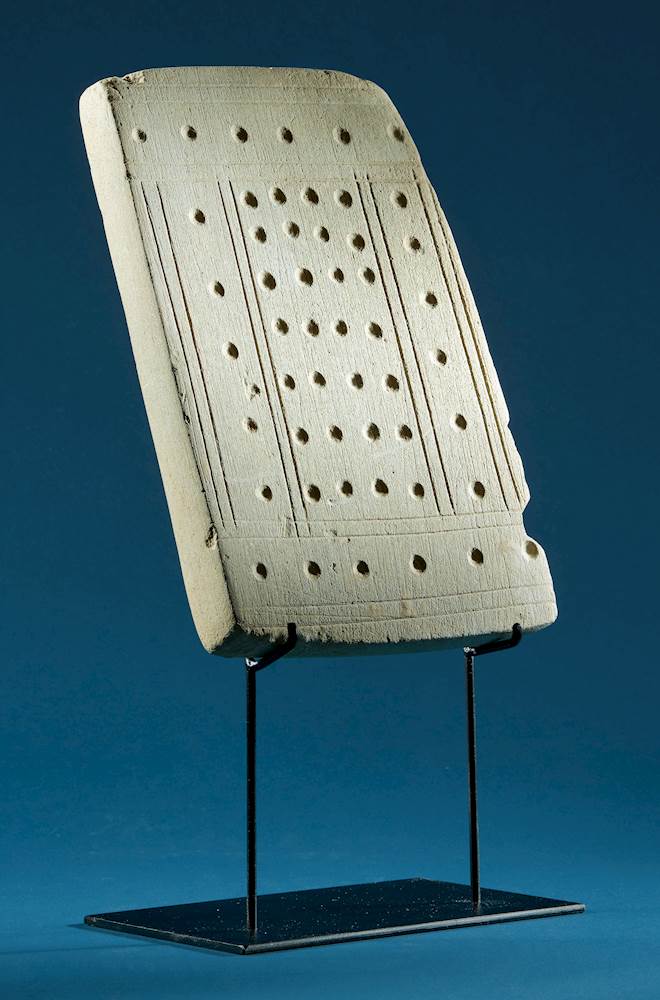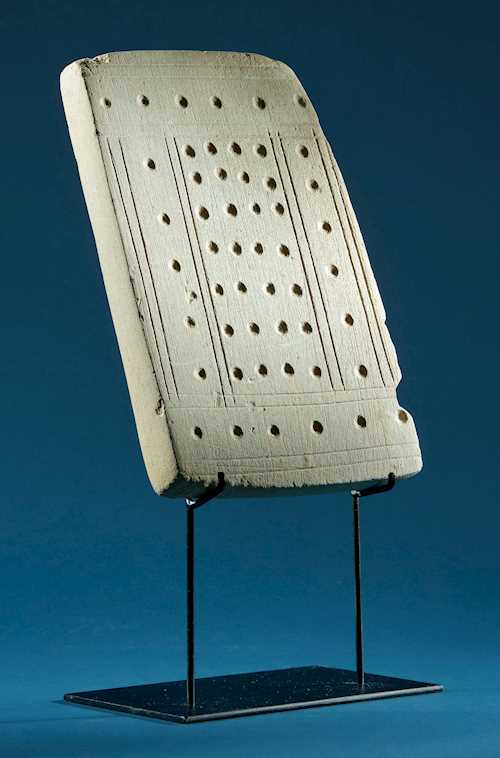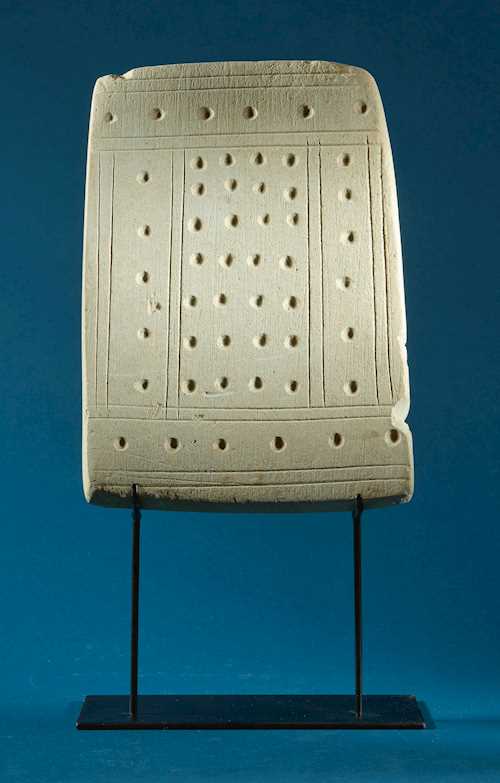
拍品 4033* - A209 Out of This World - Montag, 17. Juni 2024, 04.00 PM
STAR CHART
Pre-Columbian, circa 3300 BCE
Ecuador
25 × 18 × 2 cm (measurements not including stand)
Ecuador
25 × 18 × 2 cm (measurements not including stand)
Provenance: Swiss private collection since the 1960s
This chart is an example of archaic stone art, made by the Valdivia, one of the earliest settled cultures recorded in the Americas. They lived on the Santa Elena peninsula near the modern-day town of Valdivia, Ecuador, between 3500–1800 BCE. Forming communities, they built their homes around a central plaza in a circle or ovoid shape. In addition to stone objects, they also created some of the earliest known ceramic traditions, possibly the earliest in the New World.
The meaning of decorated stone objects like these, although they commonly are called ‘star charts’, is unknown. Are they early forms of writing, roughly contemporary with cuneiform in Sumer and hieroglyphs in Egypt? Abstract designs? Decoration? Or, as the name implies, an early way to document the movement of the stars? To date, there have been very few scientific archaeological excavations of the Valdivian culture, leading to quite a few spectacular theories, including that their pottery was influenced by shipwrecked sailors from Japan. Further excavations put that theory to rest, but the culture and its art remain an enigma.
The specimen presented here is a light grey limestone slab with drilled dots, forming the mysterious surface design.
This chart is an example of archaic stone art, made by the Valdivia, one of the earliest settled cultures recorded in the Americas. They lived on the Santa Elena peninsula near the modern-day town of Valdivia, Ecuador, between 3500–1800 BCE. Forming communities, they built their homes around a central plaza in a circle or ovoid shape. In addition to stone objects, they also created some of the earliest known ceramic traditions, possibly the earliest in the New World.
The meaning of decorated stone objects like these, although they commonly are called ‘star charts’, is unknown. Are they early forms of writing, roughly contemporary with cuneiform in Sumer and hieroglyphs in Egypt? Abstract designs? Decoration? Or, as the name implies, an early way to document the movement of the stars? To date, there have been very few scientific archaeological excavations of the Valdivian culture, leading to quite a few spectacular theories, including that their pottery was influenced by shipwrecked sailors from Japan. Further excavations put that theory to rest, but the culture and its art remain an enigma.
The specimen presented here is a light grey limestone slab with drilled dots, forming the mysterious surface design.
CHF 2 000 / 3 000 | (€ 2 060 / 3 090)
以瑞士法郎銷售 CHF 10 625 (包含買家佣金)
所有信息随时可能更改。



